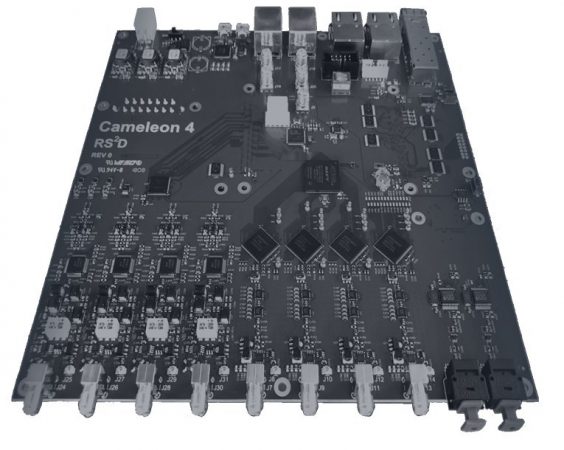
Nanalysis Scientific Corp. signs OEM partnership
by CM Staff
The partnership includes the Cameleon4 electronics technology platform along with its application software, specifically developed for areas such as molecular imaging, MRI physics, and virology.

The Nanalysis Cameleon4 electronics board
CALGARY — Nanalysis Scientific Corp., through its subsidiary RS2D S.A.S., announces that it has signed multi-million dollar OEM and licensing deal with a European corporation.
Rémy Schimpf, Senior VP Sales states “The deal includes an initial payment of roughly $1 million, and a further $2 million in milestone payments over the next three years. In addition, there is the strong potential for revenue through OEM sales in subsequent years an order of magnitude larger. Nanalysis retains the ownership of intellectual property and has ingredient branding rights. Although this partner cannot be named at this time for competition reasons, the partner has tremendous experience and a successful track record in commercial magnetic resonance systems.”
“This partnership includes our Cameleon4 electronics technology platform along with our next gen application software, specifically developed for areas such as molecular imaging, MRI physics, and virology. The Cameleon4 is also used in our benchtop NMR, high-field NMR, and MRI products, Our OEM licensing partner will combine our electronics and software technologies with several other hardware and software modules to produce a novel, integrated solution for new and existing magnetic resonance life science markets globally.”
Sean Krakiwsky, founder and CEO of Nanalysis Scientific adds, “We continue to leverage the technology we acquired to generate short term revenue, medium term market opportunities, and achieve our long-term vision. We are working with quality partners who have a proven track record and complementary visions for the future of MRI and NMR.”
“MRI and NMR machines should not be large, cumbersome, and cost prohibitive. They should not consume massive amounts of expensive liquid helium nor require a special room with re-enforced floors. These devices need to be more accessible and should not run on cryptic software that only PhD experts can use. We share a vision with our partners, where MRI and NMR devices are AI-driven, cryogen-free solutions with software intuitive enough to provide the simplicity users want, and yet still able to solve highly complex problems. All of this should be available at affordable prices. Our vision for NMR and MRI is like that of computers: We see them evolving from large immobile machines, requiring specialized operators, towards small devices that sit on a desktop or in a mobile lab, or wherever the point of need happens to be, and access data on the cloud to provide optimal, real-time solutions.”